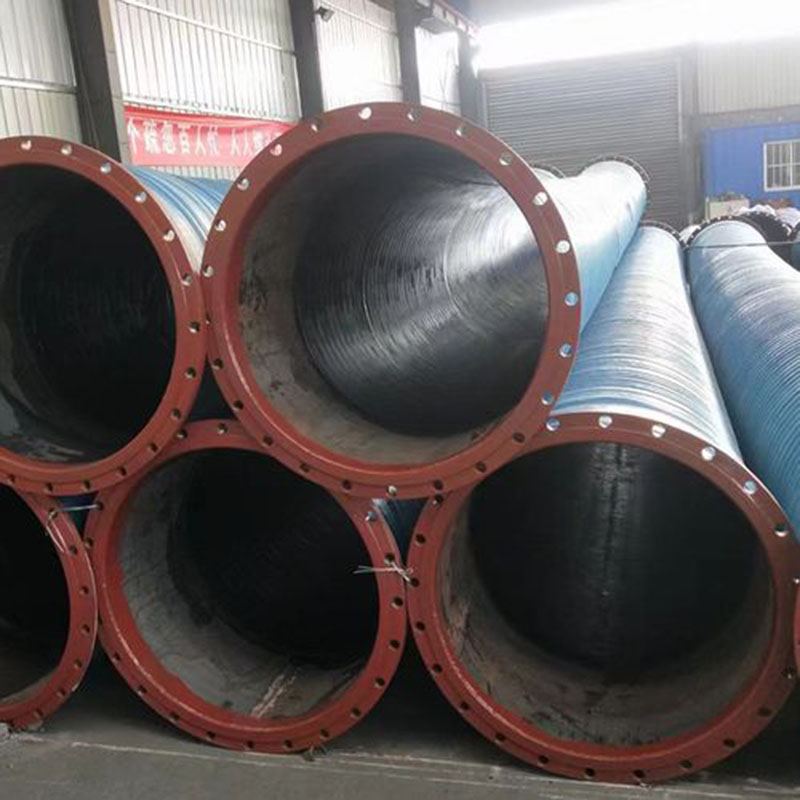

1. Rubber tube size measurement: inner diameter, outer diameter, outer diameter of reinforcement layer, wall thickness, concentricity, inner and outer layer glue thickness, inner diameter of assembly. The new national standard and ISO have added length and measuring point marks, and stipulated pipeless joints and methods of measuring the length of Rubber tubes with various pipe joints.
2. Hydraulic test Verification pressure test: Check whether the hose and assembly are leaking, deformed and damaged under verification pressure for 30s-60s. Pressure deformation test: Hold the specified pressure (working pressure, verification pressure or other pressure lower than the verification pressure) for 1 minute, and measure the length and outer diameter changes, torsion angle and bending of the rubber tube. Burst pressure test: Determine the pressure when the Rubber tube bursts at the specified pressure increase speed. Leak test: Store at a static pressure of 70% of the minimum burst pressure for 5 minutes, repeat once, and check for leakage or damage. Since the test often uses water and the viscosity of the actual liquid is different, the burst pressure and leakage pressure measured at room temperature may be slightly lower.
3. Low-temperature flexure test Low-temperature rigidity: The rubber tube is clamped on a twisting wheel with a diameter 12 times the inner diameter of the rubber tube. After being parked at low temperature for 6 hours, the torque measured when twisted 180° within 12 seconds is the same as that measured at standard temperature. The ratio of the obtained torque. Low temperature bending: The rubber tube is clamped on a twisting wheel with a diameter 12 times the inner diameter of the rubber tube. After parking at low temperature for 24 hours, it is twisted 180° within 10 seconds to check whether the inner and outer rubber is brittle and damaged. The simplest test to measure the low-temperature brittleness of a rubber tube is to bend the sample 90° at low temperature, or freeze a section of rubber tube and compress it by 1/2 to see if it is brittle. Another method is to use a heavy hammer of a certain weight to fall freely. Impact the sample to see if the sample is brittle.
4. Bending test: After bending the rubber tube to a certain extent, measure the ratio of the minimum outer diameter of the bent part to the outer diameter before bending, the steel ball passing ability and the bending force when pressurizing the tube.
5. Flattening test: Evacuate within 1 minute and maintain it for 10 minutes, then roll a steel ball with a diameter 0.9 times the inner diameter of the rubber tube to check the degree of collapse of the rubber tube. Some standards use measuring the change rate of the outer diameter of the rubber tube to express the degree of deformation of the rubber tube.
6. Interlayer bonding strength test: Most automotive Rubber tubes are braided hoses with a diameter less than 50mm. The test commonly uses long strips of 10mm or 25mm wide specimens, and also uses 25mm wide rings, which are peeled off at 90°. The tensile speed is 25mm/min.
7. Liquid wall penetration test: Under normal pressure, connect the rubber tube to a container filled with a certain liquid and seal the mouth of the container. Place the test device horizontally, and then regularly weigh the entire test caused by the liquid penetrating outward through the rubber tube. The mass of the device changes to determine the penetration rate of the liquid.
8. Volume expansion test: The rubber tube should not produce obvious volume changes under the pressure of the transmitted liquid. The method of measuring the volume expansion is to connect the rubber tube to a hydraulic source, and measure the liquid volume after the rubber tube expands with the other end. measuring tubes are connected. Increase the pressure in the rubber tube to the test pressure to expand the rubber tube, then close the hydraulic source and open the valve connected to the measuring tube. At this time, the liquid in the volume expansion part rises into the measuring tube, and the expanded volume can be measured.
9. Cleanliness and extraction test: For fuel Rubber tubes, liquid C is commonly used to inject the Rubber tube, empty it after parking for 24 hours, and clean the inner wall with liquid C. Collect the C liquid injected and rinsed, filter out the insoluble impurities, dry and weigh to get the weight of the insoluble impurities, and express the cleanliness by the number of impurities on the inner surface area of the rubber tube or the maximum size of the impurities; evaporate and dry the filtered solution , weigh to obtain the weight of soluble substances. Then use methanol to extract the waxy substance from the evaporation and dryness of the above filtrate. The obtained methanol extract is evaporated to dryness, and the weight of the waxy substance is obtained.
10. Salt spray test: Place the hose assembly in the salt spray formed by 5% sodium chloride aqueous solution at 35°C. After 24 hours, check whether the metal of the pipe joint is corroded.
